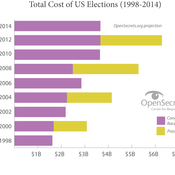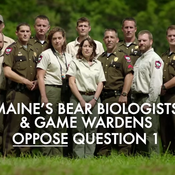Political Scientists Find A Guinea Pig: Montana
Montana Democratic Sen. Jon Tester wants investigations into a research study by Stanford University and Dartmouth College political scientists that sent 100,000 Montana voters a "voter guide" about state Supreme Court candidates. J. Scott Applewhite/AP hide caption

Montana Democratic Sen. Jon Tester wants investigations into a research study by Stanford University and Dartmouth College political scientists that sent 100,000 Montana voters a "voter guide" about state Supreme Court candidates.
J. Scott Applewhite/APPolitical scientists looking to test their hypotheses about voting behavior found a ready pool of test subjects this election: Montanans.
A hundred-thousand registered voters received a "voter guide" rating four nonpartisan state Supreme Court candidates by their liberal or conservative ideology. Voters were urged: "Take this to the polls."
The flier sent to Montana voters by political scientists at Stanford University and Dartmouth College to study voter interest in nonpartisan races. Fliers were also sent to voters in California and New Hampshire. Stanford University/Dartmouth College hide caption

The flier sent to Montana voters by political scientists at Stanford University and Dartmouth College to study voter interest in nonpartisan races. Fliers were also sent to voters in California and New Hampshire.
Stanford University/Dartmouth CollegeOnly in the fine print was this disclosure: "This guide was created as part of a joint research project at Stanford and Dartmouth."
State election officials and Montana Democratic Sen. Jon Tester did not appreciate the experiment — and are now demanding investigations.
Both schools are conducting internal reviews, and both issued apologies.
"Stanford takes this issue seriously, and we sincerely apologize to the voters who received the mailers for the confusion and concern they have caused," read a university statement.
Tester, for one, remains miffed.
"Using the people of Montana as their guinea pigs is bad enough, but the truth is that elections should not be a lab for political experiments," Tester told NPR.
In a letter to the presidents of the two schools, Tester wrote: "While I strongly support providing necessary resources and freedom to do academic research, I have incredible concern about universities and noncandidate groups manipulating data and testing their hypotheses on the voting public."
According to statements by both schools, Montana voters were not the only ones receiving fliers in the experiment: 66,000 voters in one of New Hampshire's two congressional districts received fliers about candidates in the Republican primary, and 143,000 voters in two California congressional districts — both feature two Republicans facing off in November — also got fliers.
The point of the research, according to a page on Stanford's website, is to see if voters are more likely to cast ballots in nonpartisan or single-party races when they have more information about candidates.
"Our goal in this research is to understand how providing voters with nonpartisan, visual information about candidates' positions ... affects the likelihood that voters leave their lower ballot races blank," reads a synopsis of the experiment.
The money for the experiment came from the Hewlett Foundation, which provided $250,000, and Stanford University, which provided $100,000.
Montana Secretary of State Linda McCulloch has filed a complaint against the Montana mail piece with the state's Commissioner of Political Practices, while Tester has sent a letter to the chief postal inspector over the flier's use of Montana's official seal to see if it violated the federal Deceptive Mailings Act.
"For the universities, and so-called researchers within these universities, to use the voting public as lab rats is very, very unfortunate," Tester said.
Comments
You must be signed in to leave a comment. Sign In / Register
Please keep your community civil. All comments must follow the NPR.org Community rules and terms of use, and will be moderated prior to posting. NPR reserves the right to use the comments we receive, in whole or in part, and to use the commenter's name and location, in any medium. See also the Terms of Use, Privacy Policy and Community FAQ.









